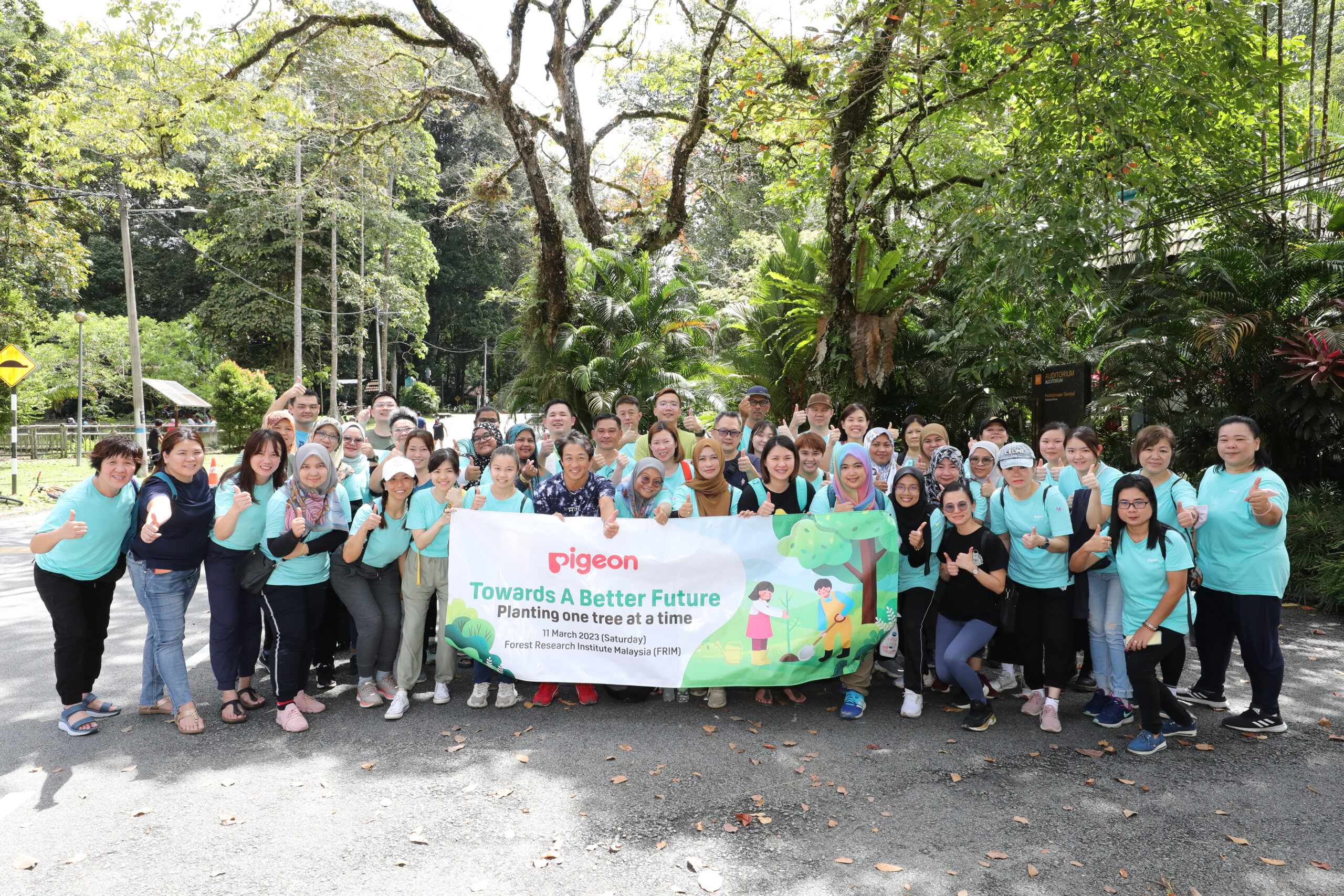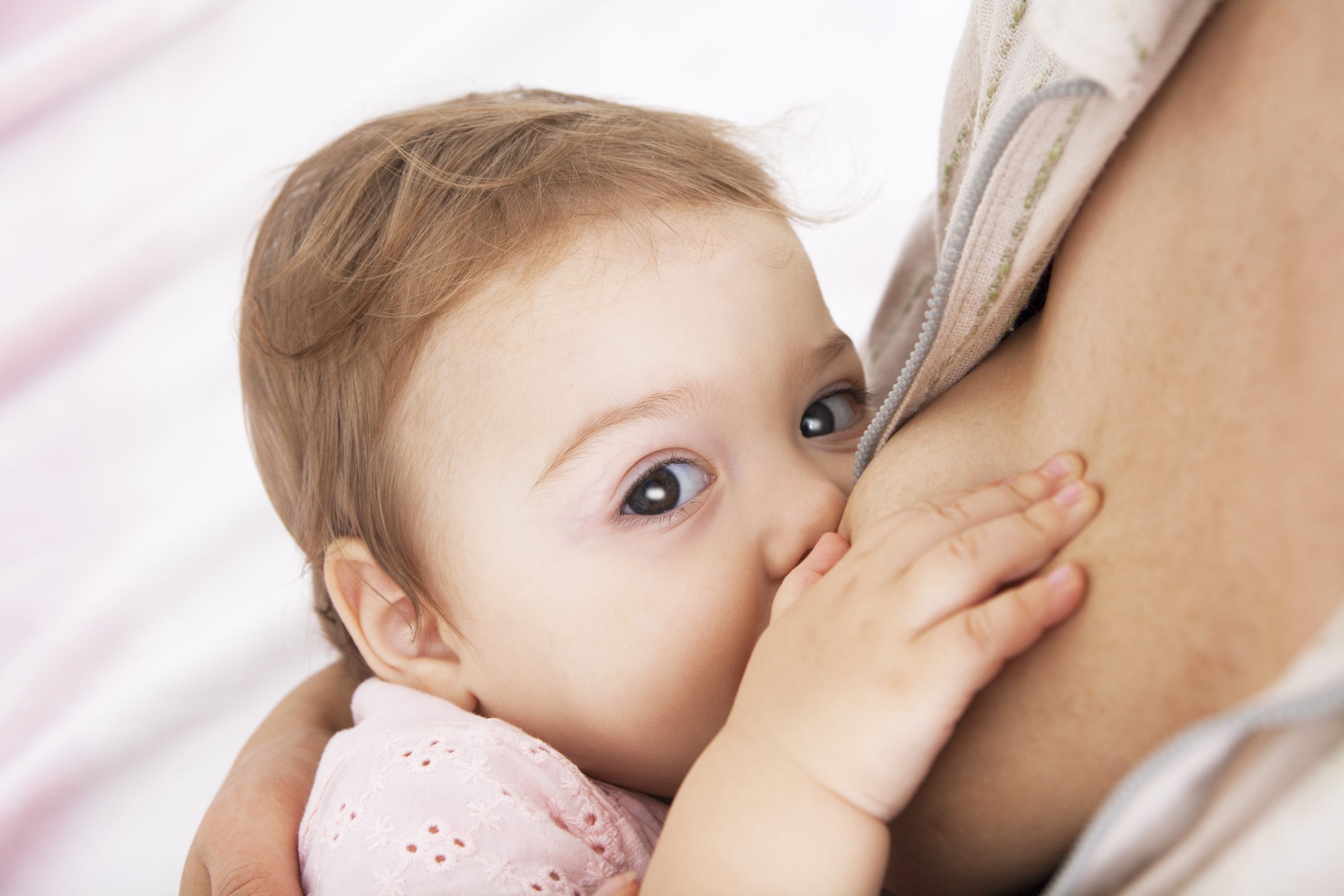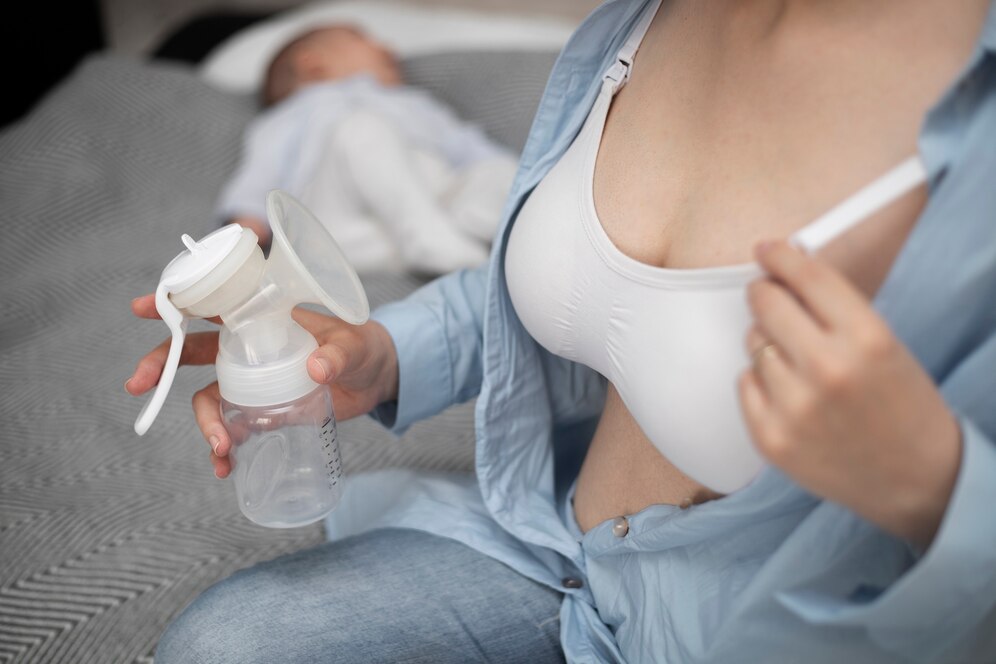Fetal development starts right after conception, so here’s a weekly guide that tells you what to expect as your baby grows with you throughout the 40-week pregnancy!

First Trimester
Week 1: As odd as it sounds, you aren’t actually pregnant in the first week as it’s your menstrual period. However, this week counts as part of your pregnancy because your due date is calculated from the first day of your last period, even though you haven’t conceived yet.
Week 2: As ovulation occurs around day 14 of your menstrual cycle, it’s the best window period for fertilisation to take place. And if the sperm successfully meets the egg, you’ve got yourself a bun in the oven!
Week 3: In just a few hours, your newly fertilised egg aka zygote will now travel from your fallopian tube to the uterus. At the same time, it will start to divide into a cluster of cells known as a blastocyst.
Week 4: Upon arriving at the uterus, the rapidly dividing cells will begin to burrow into the uterine lining and separate into two parts: the embryo, and the placenta. At this point, your developing baby is only about the size of a tiny grain of rice.
Week 5: The fifth week of pregnancy is where your embryo grows at an insane rate, as it starts to form the umbilical cord and other essential organs including the neural tube – which is where the baby’s brain and spinal cord will develop. Because of the rising hormone levels, you may experience morning sickness, spotting and food cravings.
Week 6: Now around 4 to 7mm in size, your bub is in the midst of developing facial features such as the ears, mouth and ears. Also, expect temporary discomforts like nausea, mood swings and fatigue. You may also notice your breasts feeling extra tender these days, and that’s because you’re getting ready to breastfeed.
Week 7: Your baby – now the size of a pea at about 1cm – has more defined facial features as well as developing limbs that will divide into hands, arm and feet. Your baby bump probably isn’t showing just yet, but you may go up a bra size or two!
Week 8: A growth spurt is happening! Retinas start to gain colour and bones are developing fast, forming knees, ankles, wrists and elbows.
Week 9: Nearly an inch long now, your baby is constantly making tiny movements in your belly although you can’t really feel them yet. You may, however, be able to hear her heartbeat on an ultrasound!
Week 10: Congratulations, your embryo has completed the most crucial part of development and is now officially a fetus measuring at about 3cm! Bone structures are in place and organs are beginning to roar to life.
Week 11: It’s now the size of a ping pong ball! No more webbed fingers and toes; your little one’s hands will soon be able to open and close into fists. Tiny buds for future teeth are appearing beneath the gums, and hair follicles are forming on the scalp. By the end of this week, your baby’s boy/girl bits will also start to develop.
Week 12: Your plum-sized baby has a functioning digestive system, and her kidneys are starting to produce urine. This is also the week where she will develop the moro reflex, which means she will be able to hear and react to stimulations – try talking to her or singing a lullaby!
Week 13: You’ve reached the last week of the first trimester! At about 7cm long, your baby’s intestines will begin to shift from the umbilical cord to the belly. Your placenta is fully developed and has all the structures it needs to sustain the baby’s growing needs, although it will continue to grow larger throughout the pregnancy. Oh, and is that a baby bump we see?
Second Trimester
Week 14: The start of trimester two is probably what most mamas are looking forward to the most, as symptoms like morning sickness and sore nipples will begin to ease up. And look—your baby can make different facial expressions now!
Week 15: Guess what? Your baby can sense bright lights and is now learning how to breathe. Have a stuffy nose? It’s a common side effect that occurs due to the high levels of pregnancy hormones present in your body, which increases blood flow to membranes and causes your nose to become congested.
Week 16: Expect another growth spurt to come in the next few weeks. Despite being the size of an avocado now, it won’t be long before your fetus doubles up in size.
Week 17: While your baby packs on fat in utero, you may also notice a significant weight gain during this stage. Besides your belly, your milk-producing glands are also in the process of growth to prepare for lactation.
Week 18: Around 21cm in length, your baby’s genitals are now developed enough to be viewed on an ultrasound scan – which will help you to determine whether it’s a boy or a girl. And if you’re lucky, you can even observe them having hiccups for the first time!
Week 19: Having completed the growth spurt this week, it’s safe to say your baby is now roughly the size of a tomato and weighs around 240g. She’s also starting to develop more pigmentation on her translucent skin, thanks to skin cells that produce melanin.
Week 20: We’re halfway there! You will find that she’s swallowing more now and is continuing to produce more meconium in the intestines – which is a sticky, dark green fecal matter that a newborn baby passes soon after birth.
Week 21: Don’t be alarmed by your baby’s kungfu kicks! In fact, you’ll be feeling movements a lot more now that she’s gaining control over her limbs. Her taste buds are also forming, and here’s a cool fact: what you’ve consumed can actually affect the taste of the amniotic fluid that she’s swallowing on the daily.
Week 22: At 22 weeks, your baby will have clearly distinct features such as eyelids, eyebrows and lips. Although still developing, she’s looking more like a tiny human being now.
Week 23: She’s now capable of making breathing movements as her lungs begin to mature, and you can even try hearing her heartbeat through a stethoscope!
Week 24: Your baby is at 600g and a foot long, while your uterus grows to the size of a soccer ball.
Week 25: As your blossoming baby starts to grow more peach fuzz, your very own crowning glory may be looking extra luscious and thick as well.
Week 26: Now that your little one’s more receptive to her surroundings, she will learn to recognise voices from outside the womb and even respond positively with some playful kicks. Studies have also shown that a fetus’ heart rate increases when they hear familiar sounds – especially the mother’s voice – so be sure to talk to your bump often!
Third Trimester
Week 27: Welcome to the third and last trimester, where you’ll be greeted with an adorable fetus equivalent to a head of cauliflower. Babies at this phase have since adapted to a regular sleep cycle, which means they can be really hyperactive when they’re awake. And did we mention they enjoy sucking their fingers?
Week 28: Your baby now boasts a set of well developed eyes with newly grown eyelashes. Not only can she blink and flutter lashes, she’s also able to see light filtering in through your womb.
Week 29: A fetus’ brain development is at its peak here – and their ability to interpret sights and sounds will become more evident. This means your baby may be moving around and kicking more vigorously, often in response to stimuli.
Week 30: Your unborn child will look more proportional at 30 weeks, although the head is still comparatively larger than the body. Meanwhile, those dreaded first trimester pains are likely to make an appearance again – mood swings, heartburn and fatigue, just to name a few.
Week 31: From swallowing to sucking and breathing, your steadily developing baby is actively making sense of essential life skills. It’s no surprise that she will keep you up at night with her random movements, but you may also experience what people call the Braxton Hicks contractions, often described as a tightening of the uterine muscle. Before you get overly excited, these contractions are simply an indication of your body rehearsing for labour.
Week 32: Oh boy, is she plumping up! As your baby’s system gets ready for her first breastfeed, some of the mums-to-be may start to leak colostrum from their breasts – which can be quite a messy situation, but a couple of nursing pads will help to soak them all up in no time.
Week 33: Weighing close to 2kg, your baby has grown so big that she probably takes up more space than the amniotic fluid inside your uterus. Her bones will start to harden, and she finally develops an immune system of her own.
Week 34: This little rock melon is now around 46cm in length, and is almost ready for birth. Even if she decides to pop anytime this week, rest assured your newborn will do just fine after a few days in intensive care.
Week 35: At this stage, her brain is still growing rapidly but most of her physical development will be complete within the next few weeks.
Week 36: As we approach the due date, your baby should have assumed the downwards position and her head may drop further down into your pelvis. By then, the pressure on your diaphragm will lessen significantly and your stomach won’t feel as constricted.
Week 37: You may find that your nipples stick out more than usual during the final stages of your pregnancy, which actually helps your newborn to latch on better.
Week 38: Whew, your baby is now a whopping 3kg and half a metre long. Just a few more final developments on her brain, lungs and nervous system – and she should be good to go!
Week 39: Now considered a full-term baby, your little watermelon is gearing up for the big day. If your water breaks before you go into labour, call your healthcare provider immediately.
Week 40: At 40 weeks, you’ve officially come to the end of your pregnancy. Your baby is the size of a small pumpkin and weighs about 3.5kg. What you’ll notice is that your newborn will continue to curl up in the fetal position; swaddling and talking to her will help to comfort her as she gets used to the outside world.
Week 41 & 42: Don’t worry if you’re still pregnant – around 30% of pregnancies actually last longer than the usual 40 weeks, which can easily be a miscalculation of the expected due date. Once the baby’s ready to greet the world, hormones will then be produced to trigger labour. However, as overdue infants have a tendency to look larger than other newborns, you may be required to go for a c-section if it gets too big for a vaginal birth. Doctors may also recommend other methods of inducing labour to get your baby out, so just hang in there!





